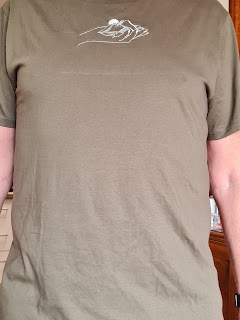Sustainable Clothing
Before I started this blog, I had not thought much about clothing. I usually just buy replacement clothing when I identify the need to replace an item of clothing (or my partner tells me an item needs replacing). Whilst I was aware of the idea of fast fashion, I had not been making conscious decisions to make sustainability a key criteria in selecting clothing.
The fashion industry is responsible for 10% of annual global greenhouse gas emissions. Many clothes are made with polyester or other synthetic fibre, normally made from coal or oil. Hence, reducing the amount of clothes made with polyester or other synthetic fibre directly reduces the greenhouse gas emissions. Clothes made with polyester shred microfibres which go into the waterways and eventually into the fish we eat. Hence, it is much better to have clothes made from natural fibres like cotton, flax, hemp, jute, wool and silk.
But just choosing natural fibres is not enough. It is important to choose clothes made from fibres that have been grown without chemicals. For example, conventionally grown cotton requires significant percentage of chemicals – 25% of the world’s insecticides and 18% of world’s pesticides. Fossil fuels are used in the production of insecticides and pesticides. It also means that wastewater from facilities producing clothes can be contaminated with chemicals.
But there are many other issues associated with making clothing. It takes significant amounts of water to make clothing. Many items of fast fashion are made in sweatshops where workers are paid unliveable wages, even with forced overtime. Workers may be forced to work in unsafe working conditions. Further, 87% of clothing is incinerated or disposed of in landfill. Hence, choosing good clothing not only reduces greenhouse gas emissions but has other significant benefits.
Buying what I need
As a result of thinking about sustainable clothing, I made an inventory of all my clothing. I then reviewed the list and gave away items I decided were excess to my needs. This is not unusual for this time of the year – I have for several years reviewed my clothing at the end of the year and gave away items that I had not used for a year. Most items are good enough to donate to charity shops for resale as second hand items. If the item is badly worn, then it is usually turned into rags or used in the garden e.g. tearing into strips and then used for holding up tomato plants.
My inventory list shows the fibres used in the production of the item. The inventory identifies that only 25% of the inventory items are made with natural fibres, reflecting my previous lack of interest in how my clothes are made. Very few items are identified as ‘organic’. Hence, there is considerable room for improvement in my clothing inventory. However, this does not mean I am going to suddenly go out and buy a new wardrobe – I believe it is always better to use up your existing clothing item then buy a new one.
I have decided to make changes over time, when items need replacing, with the aim of achieving the following:
- Clothes mostly made organically from natural fibres
- Smaller collection of quality garments
- Second hand clothing where appropriate
How to choose a clothing item
Clothing companies that are taking the challenge of producing sustainable and ethical clothing will provide information on their website on their approach to sustainability and ethical conduct. I looked up the websites for companies that produced the items in my current inventory and found a wide variety from good quality information through to no information at all about sustainability. Before buying any new items, I will now first check the company’s website.
How do you avoid ‘greenwashing’? Some companies will make claims that their clothing is produced sustainably but provide no details to support their claims. One of the best ways to avoid greenwashing is to look for external certification by independent bodies. For example, compliance with the Global Organic Textile Standard (GOTS) can give assurance that the clothing has been produced with organically produced raw materials.
A good example of this is a RAPT t-shirt I was given by my partner as a Christmas present this year. The label identified that the t-shirt was made with 100% organic cotton. The t-shirt is certified against the Global Organic Textile Standard and The Global Recycled Standard and is approved by PETA (Vegan) and Fair Wear Foundation. The t-shirt came in a cardboard box (with water based ink) which can be recycled or put into a compost bin. Their website has a page which explains their approach to sustainability.
Consumer power
As a consumer, I have the power to question companies that produce the goods I buy about their approach to reducing greenhouse gas emissions. This is important as reducing greenhouse gas emissions depends not only on what we do individually but also on how we can persuade companies to reduce their emissions. Companies will respond if enough consumers buy products which have been produced sustainably.




Comments
Post a Comment